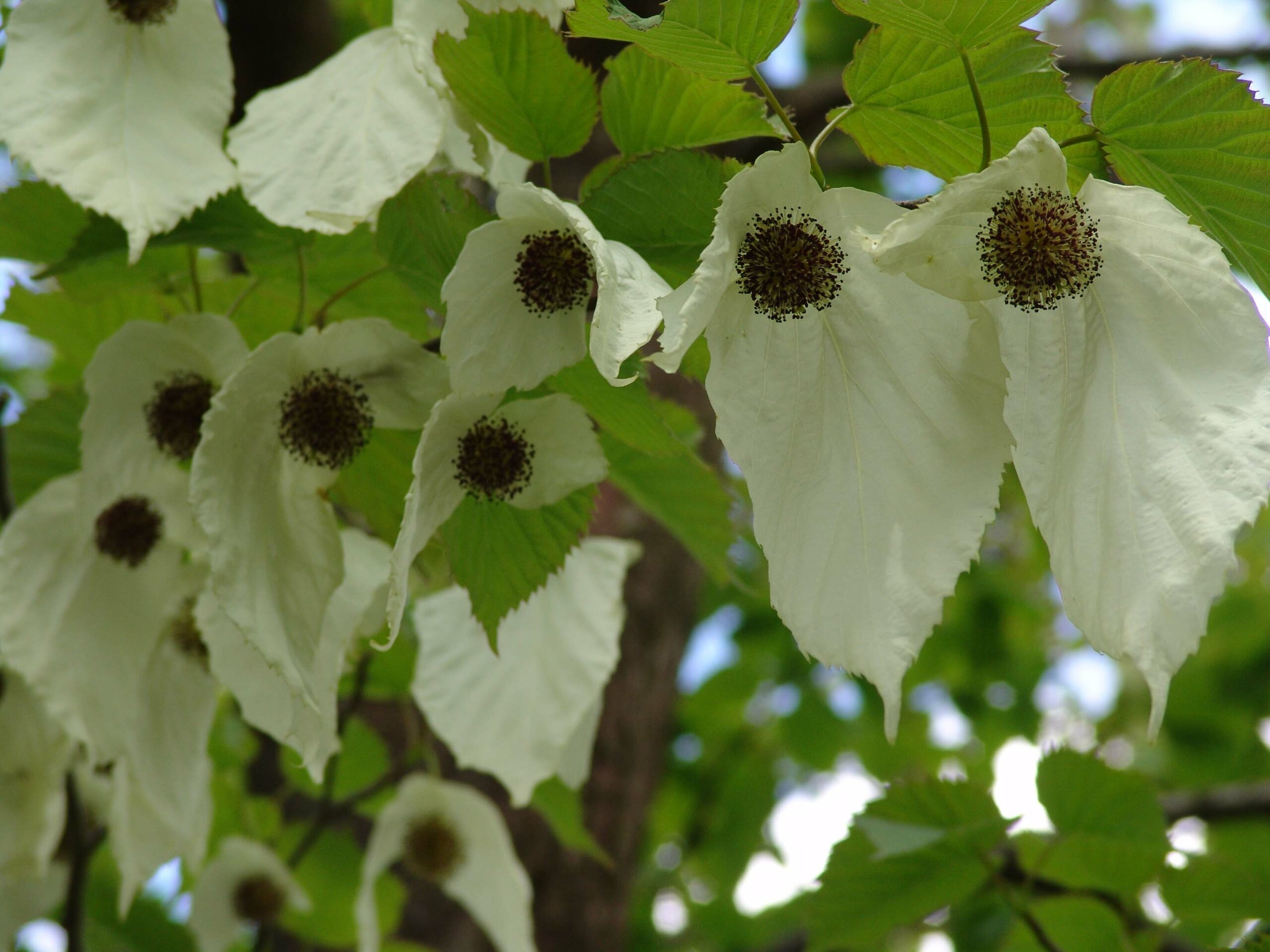
CHINA – FARGES, PERE PAUL GUILLAUME VILMORIN-ANDRIEUX, FRANCE
“To my mind Davidia involucrata is at once the most interesting and beautiful of all trees of the north-temperate flora.” –Ernest Henry Wilson
The Arnold Arboretum is full of remarkable plants with fascinating stories, yet few epitomize the history of the West’s zeal for sourcing and cultivating rare and exotic plants like Davidia involucrata. In fact, the story of our most renowned specimen of dove tree (5159*A) has all the ingredients to place its discovery among the touchstones of the age of botanical exploration—presumed rarity, national competition, personal ambition, remote travel, and the lure of fame.
Less than a decade before he was hired by Charles Sprague Sargent to mount collecting expeditions for the Arnold Arboretum, Ernest Henry Wilson was engaged as a collector by the Veitch nursery firm in his native England in 1899. Veitch was particularly eager for Wilson to gather seeds of Davidia involucrata, or dove tree, a Chinese hardwood first described by Catholic missionary Pere David in 1869 yet—thirty years on—still untested in Western gardens. Wilson was instructed to visit noted plant collector Augustine Henry in China to discern the location of a dove tree that Henry had written about seeing more than a decade earlier.
Wilson describes meeting Henry in his 1926 book, Aristocrats of the Garden. Henry created a map for Wilson of the approximate location of the single dove tree he had encountered, growing in the mountains of the sparsely-populated region between Hupeh and Szechuan provinces (Chongqing Municipality today). On 25 April 1900, Wilson met individuals in the area who remembered both Henry and the location of the dove tree he wrote about—but was devastated to find that the specimen in question had been cut down the previous year, its trunk and branches converted to posts and beams for a house. “I did not sleep during the night of April 25,” Wilson wrote of the experience.
While journeying southwest of Ichang less than a month later, Wilson was overjoyed to observe a dove tree in full flower. “It was about fifty feet tall, in outline pyramidal, and with its wealth of blossoms was more beautiful than words can portray,” he wrote in his journal. Experiencing the species in person at the peak of its ornamental powers was a revelation. “Now with a wider knowledge of floral treasures of the Northern Hemisphere,” he wrote, “I am convinced that Davidia involucrata is the most interesting and most beautiful of all trees which grow in the north temperate regions. The distinctive beauty of the Davidia is in the two snow-white connate bracts, which subtend the flower proper… The flowers and their attendant bracts are pendulous on fairly-long stalks, and when stirred by the slightest breeze they resemble huge butterflies or small doves hovering amongst the trees.”
Wilson returned to the location in fall and collected what Veitch called “a nice lot of seed” of Davidia involucrata, which were received in 1901 and first germinated in 1902. In addition to the modest stipend he received from Veitch, Wilson received a gold pocket watch from the firm, engraved “E.H. Wilson, from James Veitch, 1899-1902, Well done!” Despite the congratulatory tone of the inscription, the glory of introducing dove tree to the West had already been secured elsewhere. Only upon his return did Wilson learn what Veitch himself had discovered shortly after sending Wilson on his quest: they had been beaten to the punch by another collector (Roman Catholic Missionary Pere Farges) working in China for another nursery (Maurice de Vilmorin) under the flag of another country (France). Farges had collected Davidia seed three years before Wilson, in 1897, and Vilmorin raised one plant at his arboretum in 1898. Rooted cuttings of this introduction were sent to Kew Gardens and the Jardin des Plantes in Paris, and a rooted layer was sent to the Arnold Arboretum and accessioned in 1904. Today this plant survives as Arnold Arboretum accession 5159*A.
The Vilmorin nursery’s plant from Farges first flowered in May, 1906, a smooth-leaved variety that later received the name Davidia involucrata var. vilmoriniana. Planted in the microclimate on the south slope of Bussey Hill, 5159*A survives in good condition, drawing visitors to Bussey Hill to witness its remarkable display in mid-May. Its multi-trunked habit—along with a notation on its accession card that it was “killed to the ground winter 1933-34”—indicate that it’s century-long adjustment to Boston’s climate has not been without challenge. Nearby, another centenarian specimen (14473*A) bears proof that Wilson had his own role in bringing Davidia to Western gardens. It was sent to the Arboretum from Veitch nursery and accessioned in 1911, grown from the seeds Wilson thought would make his name.
China
Viewing this plant in-person? Look for these defining characteristics:
1

2

3

4

About Our Collection
Fun Facts
Stats
- Living Specimens
- Specimens Dead or Removed
- First Addition
- Most Recent Addition
- Tallest Specimen







4 Living Specimens
| Plant ID | Accession Date | Received As | Origin | Source |
|---|---|---|---|---|